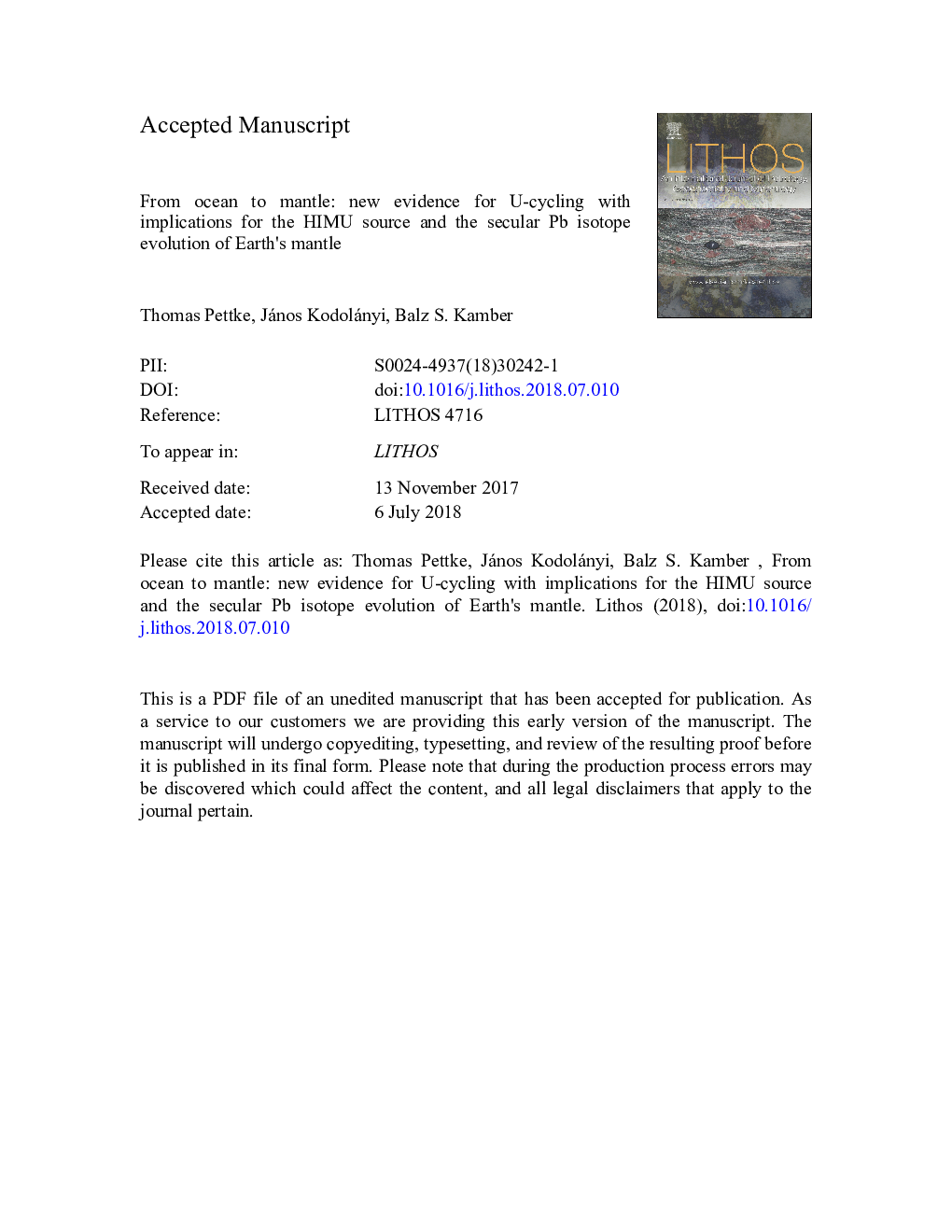| Article ID | Journal | Published Year | Pages | File Type |
|---|---|---|---|---|
| 8911508 | Lithos | 2018 | 52 Pages |
Abstract
Of the isotopically distinctive mantle domains, the so-called HIMU (“high-μ”; μâ¯=â¯238U/204Pb) source is the most extreme, and its genesis continues to be debated. We report very strong U enrichment at unchanged Th concentrations in Cretaceous oceanic serpentinites with exceptionally high 206Pb/204Pb (reaching 56) but unchanged 208Pb/204Pb. Similar, but less extreme, features are found in 1.9 billion years old altered oceanic crust (AOC). Forward modelling demonstrates that mantle, if metasomatised by supercritical liquids derived from AOC and serpentinites, evolves to the HIMU Pb isotope signatures, while satisfying experimental and empirical constraints on subduction zone element processing. By contrast, no model solutions for the conventional proposal of the HIMU source representing residual igneous altered oceanic crust can be reconciled with 208Pb/204Pb, strengthening the need for a paradigm shift regarding HIMU OIB genesis. Over time, the net U addition to the convecting mantle via deeply subducted serpentinite has expressed itself as the so-called second terrestrial Pb isotope paradox, or kappa conundrum.
Related Topics
Physical Sciences and Engineering
Earth and Planetary Sciences
Geochemistry and Petrology
Authors
Thomas Pettke, János Kodolányi, Balz S. Kamber,
